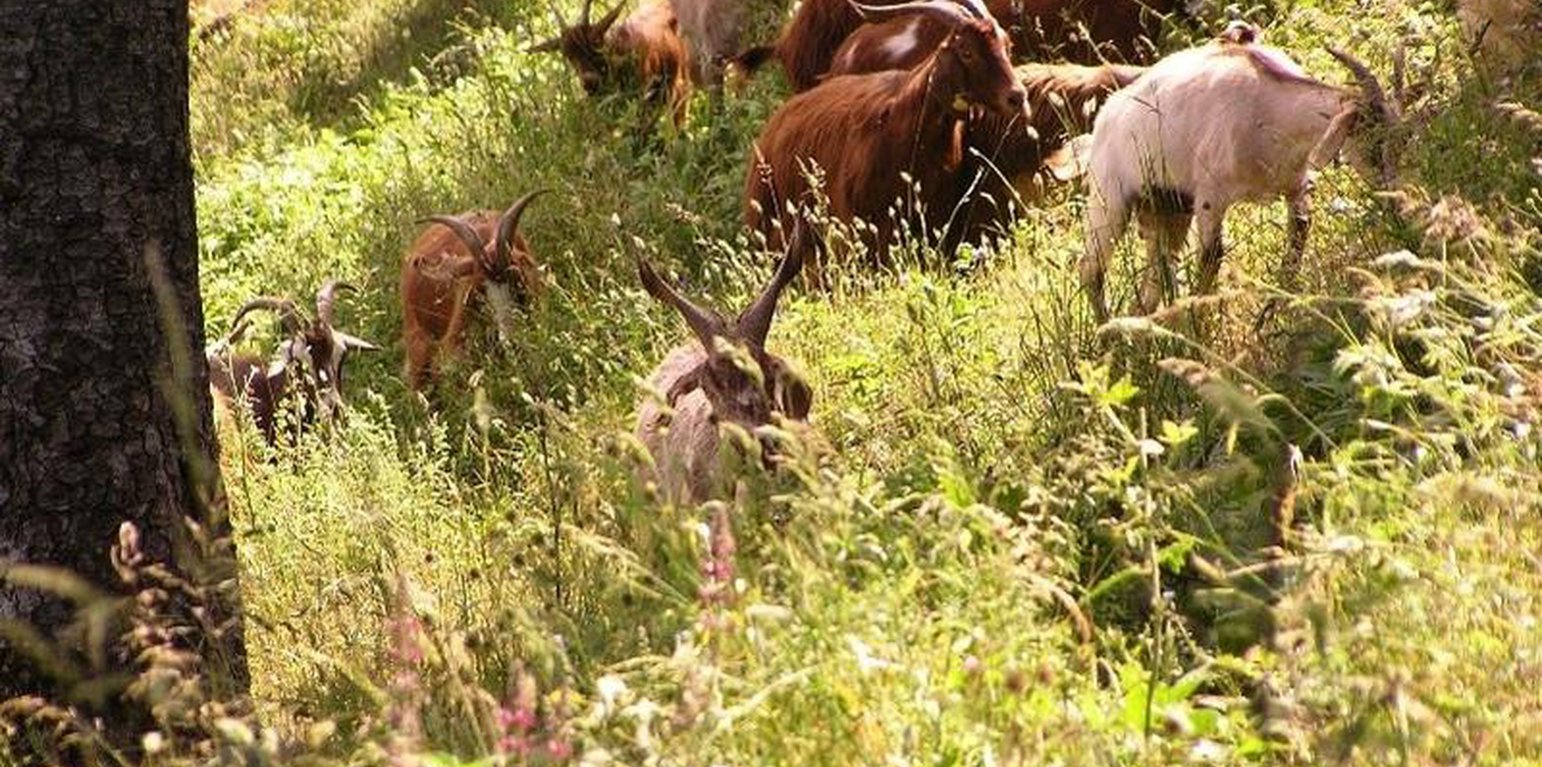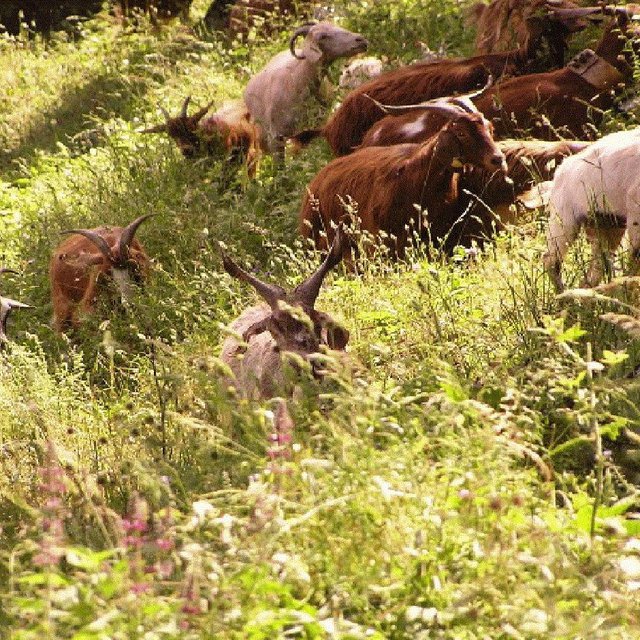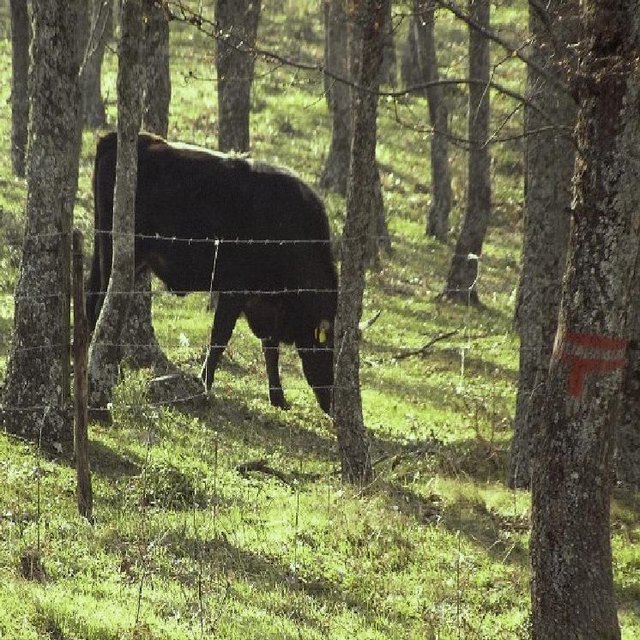



During the driest season, farmers shifts grazing to deciduous forest. Grazing in forest is controlled because it is limited to specific areas and with a controlled number of animals (cows and goats). In deciduous forest, the animals can still find green grass in the dry season. This action prevents excessive stress in the surrounding rangelands, which are suffering from a seasonal summer water deficit, as is typical of areas with a Mediterranean climate.
Purpose of the Technology: One purpose of this management technology is to allow grazing in environments that still preserve grasses in the summer dry season. Moreover, this technology can prevent overgrazing (and its consequences in rangeland and pastures). Controlled grazing is typical in the Rendina watershed (Basilicata, Italy).
Establishment / maintenance activities and inputs: The upper part of the watershed is located above 800 m a.s.l. and is characterized by deciduous oak forest, which every 20 years is subject to selective cutting. Selective cutting involves cutting a high percentage of a limited range of tree species. Within about 10 years, regeneration of the whole wooded area is possible. This allows for a constant regeneration of the woodland and reduces the probability of a progressive degradation as well as of wildfires due to an excessive build-up of the fuel load. The surrounding areas are either cultivated or rangeland and suffer from the soil erosion and landslides that give rise to degradation and hence to the loss of arable lands.
Natural / human environment: Forests are either government-owned or privately-owned, but controlled grazing woodland areas are mostly government-owned. Based on the number of grazing animals admitted, the farmers need to pay a tax to the municipalities or regions. Each farmer has a specific number of animals admitted to the woodland area and there is a overall maximum of animals especially during summer, when a risk of overgrazing exists. Access to private forest, on the other hand, is arranged directly with the owners.
Grazing is organized on a daily basis by the herdsman. The controlled grazing areas are always located in the woodlands where selective cutting is carried out. In such areas livestock during summer can enter and move more easily in the relatively cool conditions.
When controlled grazing is adopted as the conventional management technology, selective cutting of trees every 20 years is also used to provide additional earnings from the sale of firewood.
Annual rainfall is 500 mm with two rainy seasons (October-November and March-May). Potential evapotranspiration is up to 1100 mm annually. The Rendina catchment ranges from humid-subhumid to subhumid-semiarid conditions. The surrounding area ranges from (subhumid)-semiarid to semiarid-arid.

Местоположение: Rendina Basin, Potenza / regione basilicata, Италия
Число исследованных участков, где применяется Технология:
Пространственное распространение Технологии:
На постоянно охраняемой территории?:
Продолжительность применения Технологии: 10-50 лет назад
Тип внедрения/ применения






| Опишите затраты | Единица | Количество | Затраты на единицу (euro) | Общая стоимость на единицу (euro) | % затрат, оплаченных землепользователями |
| Оплата труда | |||||
| Selective cutting of woodland | ha | 2,0 | 300,0 | 600,0 | 50,0 |
| Labour | ha | 1,0 | 100,0 | 100,0 | 100,0 |
| Общая стоимость запуска Технологии | 700.0 | ||||
| Общие затраты на создание Технологии в долларах США | 875.0 | ||||
| Опишите затраты | Единица | Количество | Затраты на единицу (euro) | Общая стоимость на единицу (euro) | % затрат, оплаченных землепользователями |
| Оплата труда | |||||
| Selective cutting of woodland every 20 years | ha | 2,0 | 300,0 | 600,0 | 50,0 |
| Shifting animals in closed woodland areas | ha | 2,0 | 150,0 | 300,0 | 100,0 |
| Labour | ha | 1,0 | 75,0 | 75,0 | 100,0 |
| Общая стоимость поддержания Технологии | 975.0 | ||||
| Общие затраты на поддержание Технологии в долларах США | 1'218.75 | ||||
Forest wood
The technology can contribute to education of young farmers.
Only if grazing is not well controlled